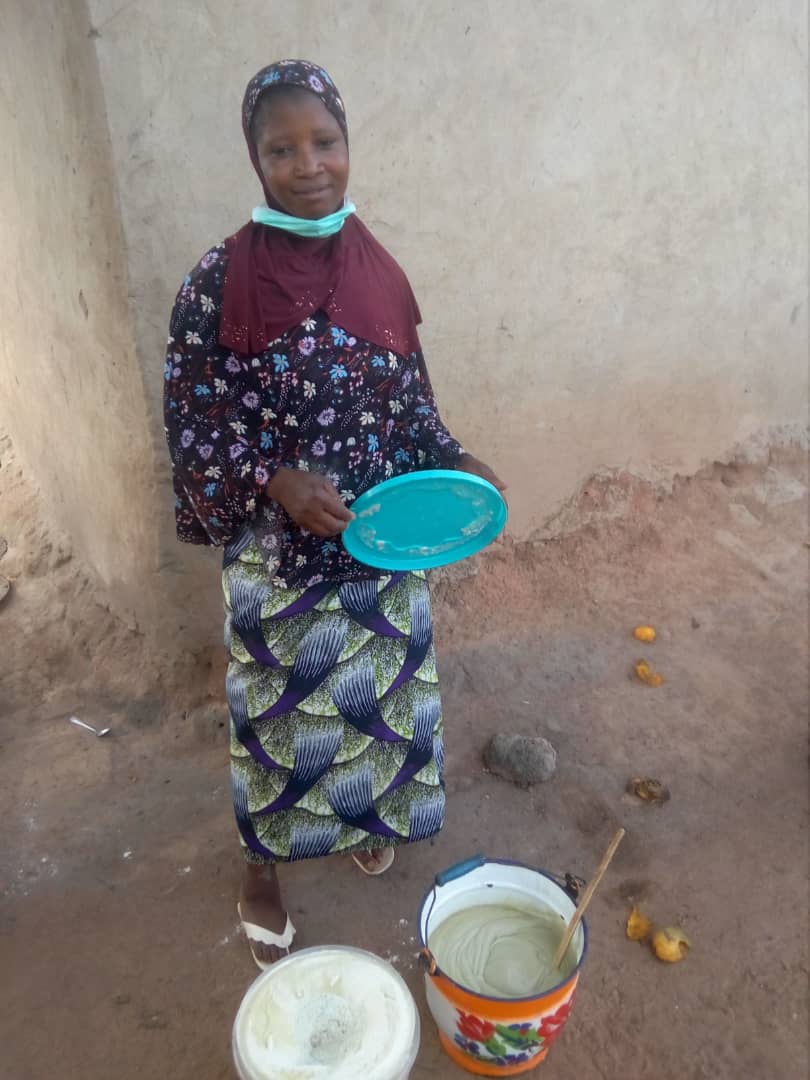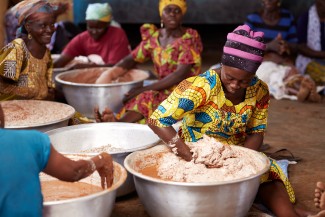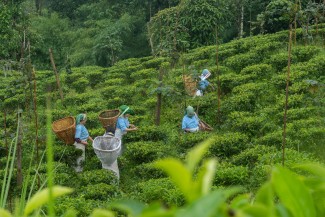Shea is critical to the income of rural communities, and a new effort across four shea-producing countries in West Africa is looking to boost those incomes
The goal of eradicating poverty in rural communities has, for decades, pivoted around the agro-industrial sector. This includes the shea industry, which employs four million women in its export sub-sector in West Africa.
Largely an enterprise of women, shea is a critical contributor to the income of rural communities, representing up to 32% of a household’s cash. The coveted fruit serves as a source of food, and holds important nutritional and medicinal benefits, while shea landscapes have been shown to contribute significantly to mitigating the effects of climate change.
Over the last 20 years, desire for shea has soared by 600% due to its increasing use in both food and cosmetics. In four West African countries where shea is one of the top three export crops and production volumes are climbing – from approximately 50,000 MT annually to more than 300,000 MT – there is a new effort to address the gap between supply and the ever-increasing global demand.
Benin, Burkina Faso, Mali and Togo represent 61% of shea exports worldwide, and a partnership between the Global Shea Alliance, the Enhanced Integrated Framework (EIF) and USAID is aiming to grow these countries’ participation in the regional and global trade in shea.

Kora N'gobi Mouniratou is from Sakarou in northern Benin, and is a member of the Antisua Shea Cooperative. Antisua means to take charge yourself in Bariba, the main language in north Benin. The name gestures to the women that are part of this 35-member cooperative coming together to confront the challenges they face in a traditional society.
The Antisua Shea Cooperative started in 2013 as a way for women to support each other during life events like deaths, births and weddings. Now, it has also pivoted to shea, which is actually not that much of a turn.
“For me, shea is a generational business from my mother to me. The shea tree is a blessing from God and collecting the fruits provides me income during the campaign [Editor’s note: campaign refers to the time when shea is collected, processed and sold]. Thanks to the income I get from the shea activity, I support my husband in catering to the schooling needs of our five children, clothing and household expenses. It makes me satisfied that I am making a contribution to my family,” Mouniratou said.
But Mouniratou and her co-op colleagues have yet to fully tap into the enormous potential of the shea value chain for a number of reasons: their collection practices are still traditional, and their processing and storage of shea has not been modernized. She recounts falling victim to snake bites or scorpion stings on her picking expeditions as one major impediment to meeting her targeted volume of shea kernels, and even after gathering them, faces difficulties in where to properly store them – a situation that caused her to lose a substantial quantity of her harvest last year.
“I struggle to access the market for the butter I produce because I have to travel very far from my village to sell the butter, but that is when you are even fortunate to get access to funds to produce the butter,” Mouniratou explained.
She currently travels on foot to the market, carrying her heavy load of shea for sale on her head. With more funds, she could buy more shea kernels, and process more shea to sell.
The project is addressing these stated needs, assisting people like Kora and her fellow female shea collectors to improve their shea processing capacity and access new markets, including helping with transportation to sales points. For the Antisua Shea Cooperative, they will be formalized and provided infrastructure and equipment so they can take their work to the next level. Fifty warehouses for female cooperatives, including Antisua, will be built and donated to store shea.
The aim is to have worked with 30,660 women shea collectors and processors so they have improved skills, access to finance and a better ability to get their shea to market. 2,180 small- and medium-sized enterprises (SMEs) will be assisted to get export-ready, starting with two studies to provide step-by-step instruction, especially around export procedures, and in conjunction with private sector inputs. Another study is looking at the best markets for shea in a sector that is dynamic and changing. In Africa, South Africa, Egypt, Nigeria and Ghana have an increasing demand for shea. Farther afield, China, South Korea, the United Arab Emirates and Japan are looking promising.
For the four countries, the aim is to increase the total shea trade by 28,880 MT annually. This will have a national-level impact.
Consequently, women’s cooperatives will be strongly positioned within the supply chains of the most competitive companies in the sector across the four countries, and SMEs will be well-positioned to access new markets in Africa and Asia. For women like Mouniratou though, this means fewer burdened long walks and fewer insect attacks, while more cash in her pocket goes to making a better life for her family.
Header image by Imagens Portal SESCSP/Flickr
If you would like to reuse any material published here, please let us know by sending an email to EIF Communications: eifcommunications@wto.org.


